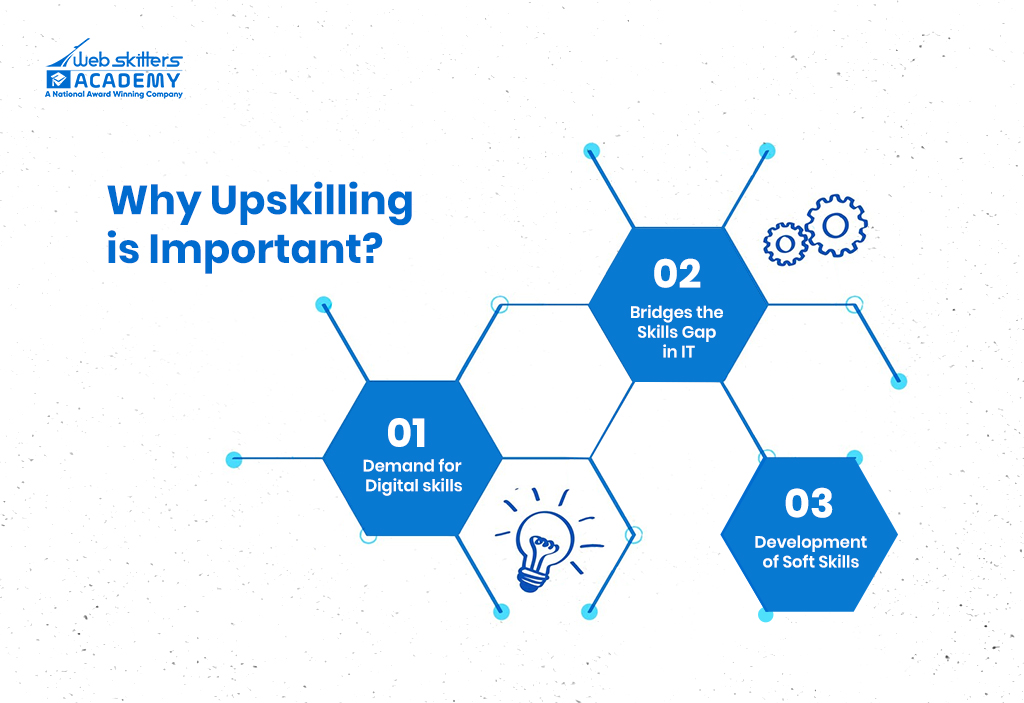
India’s job crisis intensifies with only 42.6% of employable graduates, according to the latest skills gap analysis by Mercer-Mettl. This sparks concerns over the deepening skills gap in an AI-driven workforce.
India’s destiny will be shaped by the younger generation that will join the workforce today.
Why is that?
That’s because in 2019, India entered its most favourable stage, when it comes to suitable demographics. There are more working-age people than non-working-age ones. This will be consistent for another 2-3 decades. If India cannot tap into this energy, its future prospects will not be too bright.
The latest skills gap analysis tells us something alarming.
A skills gap analysis helps employers identify missing skills in their workforce, enabling better planning, training, and productivity. In India, employability rates remain low, with even Tier-1 graduates struggling to meet industry demands due to mismatched education, demographic shifts, and changing workforce expectations. Upskilling tech professionals, particularly in IT and soft skills, alongside initiatives by training institutes, are the key to bridging this gap and preparing talent for a competitive job market.
Do you want to learn more? Without further ado, let’s explore all that and more.
What is Skills Gap Analysis and Why It Matters in India?
The skills gap analysis is the process by which employers and the government identify missing skills in a group of people. This way, they can develop a plan to bridge them.
A skills gap refers to the difference between your employees’ skills and the skills required to succeed.
Why is skills gap analysis important?
There are various reasons for this, like it provides comprehensive workplace visibility, allows workforce planning, boosts learning, increases productivity, and so on.
Let’s discuss some of them briefly.
- Workforce Visibility: It helps employers identify the gaps. This helps them decide where extra resources are needed.
- Workforce Planning: A high skills gap may indicate flaws in the hiring process. So, identifying these flaws can help in better future workforce planning.
- Learning and Development: This analysis can help employees identify their weaknesses, which will encourage professional development and learning.
- Productivity: The skills gap analysis recommends constructive actions which employers can implement to address these gaps and improve their workforce productivity.
- Competitive Advantage: Knowing about the weaknesses and strengths of your workforce can enable you to address the weaknesses quickly, which can make you stand out.
What is the Current Employability Status of India?
India’s job market is definitely at the crossroads. As industries worldwide are evolving with automation and AI, Indian graduates are struggling.

According to India’s Graduate Skill Index 2025, only 42.6% of fresh graduates are employable. This figure was somewhere around 44.3% in 2023.
What about the employability of Tire-1 colleges?
Even the graduates from Tier-1 colleges have employability as low as 48.4%. The Tier-2 and Tier-3 colleges have an employability of 46.1% and 43.4% respectively. This shows the extent of the skills gap that persists in India.
What about soft skills?
Soft skills are the ones that cannot be replaced by machines. So, these are highly in demand. Abilities like communication, critical thinking, and leadership have an employability of 55.1%, 54.6%, and 54.2% respectively.
These are very important for professional success. Out of all these, creativity is extremely low with an employability score of 44.3%.
What is the employability of non-technical talent?
Although there is a rise in employability in the data science and AI field, the non-technical roles still suffer. About 43.5% of graduates are employable in non-technical fields such as HR, marketing, business development, and sales. This has seen a substantial drop from 48.3% in 2023.
These non-technical skills are very important alongside the technical skills. Companies want their employees to unlearn, learn, and adapt to the evolving working environments.
So, all this data shows the skills gap that is persistent in India.
This is because there is a massive gap between the workforce skills available in India and the skills wanted by employers. This is portrayed by the employability statistics of Indian graduates.
Now let’s examine why the skills gap is so prevalent in India.
What are the factors responsible for the skills gap in India?

1. Educational Factors
Although education plays a major role in reducing the skills gap, the educational disparities in India are pretty massive. However, the introduction of NEP 2020 has been a transformative step in the Indian education system.
The whole point of NEP 2020 is to create a system that aligns with today’s evolving and dynamic world. Primarily, this policy aims to shift the educational focus to practical approaches to a topic rather than the rote learning approach.
Why is NEP 2020 important to bridge the skills gap?
Let’s take the example of the IT sector in India. Despite the rise in demand in the IT sector, there are gaps between what the students are learning and the practical skills required to carry out their daily tasks.
The majority of the graduates are well-versed in the theoretical concepts. However, they lack real-world skills that are needed to carry out tasks in this sector.
According to a report by Equinix, 74% of the Indian IT decision makers view a lack of IT skills as the top threat to businesses. So, NEP 2020 will help them neutralise the threat.
2. Demography
India is currently witnessing a demographic shift, and this shift is impacting the skills gap. There is an increase in the youth population. This means that a significant number of workers are entering the market. However, the industry skills required don’t match their capabilities.
3. Workforce Expectations
There is a substantial shift in Indian workforce expectations. Today’s professionals are career-driven. So, people are looking for jobs that provide skill development and not just fair compensation.
Neglecting the workforce expectations can be harmful for businesses, as it will lead to a disengaged and under-motivated workforce. This will widen the skills gap.
How can this be tackled?
By providing periodic training programmes, career development initiatives, mentorship programmes, and allowing flexible internal organisational mobility.
Why Upskilling IT Professionals is Important?
By now, we know why skills gap analysis is important. We have also explored the current status of employability and skills gap in India. Not only that, we have also explored the reasons why the skills gap is so prevalent in India.
Now, let’s understand why upskilling is important to thrive in the IT industry.
What is Upskilling?
It involves acquiring new skills and knowledge to adapt to emerging trends and technologies, thereby staying relevant in the current market.
Today, the job market is highly competitive. So, keeping up with the emerging tools and technologies can help professionals, especially in the IT industry.
It allows them to enhance their expertise, increase their employability, and work on their capabilities.
Why Upskilling is Important?
The skill gaps analysis of India shows that there is a considerable skills gap among employees and recent graduates. So, upskilling is important for both professionals and students alike. Do you want to know why? Let’s find out!

1. Demand for Digital Skills
Technology is now ingrained in each aspect of business operations. So, businesses need professionals who can adapt to the emerging technologies quickly. Upskilling allows individuals to acquire the skills required to do just that.
2. Bridge the Skills Gap in IT
With technological advancements, conventional education is failing to keep up with the job market’s demands. So, with the help of targeted upskilling, training institutes and businesses can bridge the skills gap to make sure they create an adaptable and competent workforce.
3. Development of Soft Skills
Upskilling is beyond technical expertise. It allows professionals to develop soft skills like creativity, problem-solving, communication, and so on. These skills are important for developing a collaborative mindset, increasing efficiency, and organisational productivity.
So, upskilling is a way through which the skills gap in the IT industry can be bridged. However, we need to understand how the IT training institutes can help in bridging the Indian skills gap, as shown by the skills gap analysis.
How the IT Training Institutes in Kolkata are bridging the Skills Gap
In this section, we will talk about how the IT training institutes are bridging the skills gap.

1. Bridging the Skills Gap
By now, we have already understood that the freshers are qualified for a job role but are not skilled enough. It is because rote learning doesn’t make them prepared for real-life industry situations.
So, these IT training institutes can help freshers and professionals acquire the skills needed by the industry. It will be more helpful if students start early to acquire the in-demand skills.
As a high school graduate, students often sit on a goldmine of opportunities. They have the time and energy to pursue what they love.By enrolling in job-oriented courses that align with their interests and passions, they can secure jobs right after graduation.
This will ultimately address the skills gap that is plaguing the Indian job market.
2. Encourages a Startup Mentality and Provides Future Skills for IT Leaders
According to The Economic Times, India has 7 million gig workers. This figure is expected to grow up to 25 million by 2030.
This rise of the gig economy is due to the increasing Indian job volatility. Due to the same exact reasons, there is a rise in startups in India as well. However, the Indian startups lack:
- Cross-functional collaboration skills
- Time management skills
- Problem-solving skills
- Creativity
- Critical thinking skills
So, if these skills are incorporated in students during their peak learning years, India will have leaders who can build successful startups. They will be equipped with skills that will allow them to confront real business challenges.
This can easily be done by IT training institutes in Kolkata through their skill-oriented programmes.
3. Provide Career Choices that Go Beyond the Traditional
According to a Coursera survey, more than 95% of the students in India (as compared to 90% worldwide) believe that they will get better jobs if they pursue a professional certification.
It is indeed true that 92% of employers believe that professional certification strengthens the job applications of potential candidates.
However, students often forget to follow their interests and passions while enrolling in a professional certification course. They often choose it because of peer or parental pressure, only to find themselves dissatisfied with their career.
So, career awareness is very important in this regard.
How to spread career awareness?
Career counselling and guidance from training institutions can help students and parents develop career awareness. They can make them realise that the right career path often comes from looking away from the traditional, based on the students’ areas of interest.
This way, they can have a fulfilling and rewarding career path. That means they will be equipped with all the necessary skills in their chosen sector, bridging the skills gap.
Webskitters Academy: An Institute at the Forefront of Upskilling the Youths
Today’s evolving job market needs a workforce that’s not only qualified but also equipped with industry-ready skills.
It’s a fact that the gap between traditional education and industry demands is a significant challenge in India, which can be seen in the skills gap analysis. Many graduates may be qualified, but not all are job-ready. This can be seen by their employability.
IT training institutes can bridge the skills gap by spreading career awareness. This way, they can produce a future-ready generation that is employable and adaptable.
The need for these IT training institutes to bridge the Indian skills gap will persist. However, with the right strategies, these institutes can use their resources to the fullest to make sure that the gap is minimised.
So, if you want career growth in the IT industry, these IT training institutes are your gateways.
Webskitters Academy is one such IT training institute that has made its mark in the Indian IT landscape. Through our innovative learning approach and skill-based curriculum, we are constantly striving to minimise the Indian skills gap.
Do you want to know more about us? Book a call with us and help us decide the right career path for you!
FAQs
What is a skills gap analysis?
It’s the process where employers identify missing skills in their workforce and plan to bridge them.
Why is skills gap analysis important in India?
It helps in workforce planning, boosts productivity, encourages learning, and creates a competitive advantage.
What is the current employability status of Indian graduates?
Only 42.6% of fresh graduates are employable, with Tier-1 colleges at just 48.4%.
Why is upskilling crucial for IT professionals?
Upskilling helps professionals stay relevant with new technologies, improve employability, and strengthen soft skills.
How are IT training institutes in Kolkata addressing the skills gap?
They provide industry-oriented training, encourage entrepreneurship, and offer career-focused certifications.
Search
I Want to Learn...
Category
Explore OurAll CoursesTransform Your Dreams
into Reality
Subscribe to Our Newsletter
"*" indicates required fields
 New Year Special Discount Offer - Upto 20% Off on all Course Fees - 50 Seats Available
New Year Special Discount Offer - Upto 20% Off on all Course Fees - 50 Seats Available 







